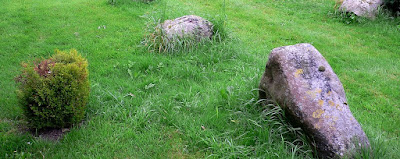MEGALITHS - THE MAGICAL STONES IN OUR COUNTRYSIDE - MORE IN MY FOLKLORE OF ESSEX!
Every town and village in England has something special about it – legends, customs and those extraordinary little places unique to that particular part of the country. Essex presents many faces to the world with its mixture of large towns, villages and coastal resorts. Many are well-known and well exploited for the tourist trade, but nestling quietly in nooks and crannies of the Essex countryside are many odd, unexpected and curious treasures with an interesting tale to tell.
The magic of stones
Before the birth of geology, people must have had an explanation for some of the strange features found in the Essex landscape. Across the county, there are many unusual stones to be found, both large and small. As a child, Kathleen Curtis in Colchester was given a penny by the local farmer for every bucket-full of stones she collected from the field. Other farmers believed that there was no real point as the land would ‘only grow more’. One tale tells of a Colchester farmer whose old uncle kept a “Mother-stone” on his window-sill believing that pebbles were its offspring.
Essex has many ‘puddingstones’ - so called as they resemble giant plum puddings containing small browny-red pebbles like currants - were once believed to be imbued with magical and medicinal powers. Technically known as ‘conglomerates’, they vary in size from a few centimetres across to about two metres and resemble concrete. When Pope Gregory’s missionaries attempted to convert the pagan Britons to Christianity in AD 596, the holy brothers did all they could to discourage devil stone-worship, yet superstition has lingered on in some parts of the county even today.
Large stones were often built into the base of churches such as those at Broomfield, Fyfield, Dunmow and North Stifford. A line of boulders stretches from the River Lea towards Epping Upland, Marks Tey, Waltham Abbey and Ugley Green. Some believe the stones were used as markers by the early tribes of East Anglia.
Ghostly Moving Stones
An interesting story surrounds the huge stone found in the churchyard at St Botolph’s at Beauchamp Roding. In centuries past when the villagers started building the church they chose a site near the village, dragging the huge stone down that had stood on top of the hill. Next morning it had gone, and was back on top of the hill. Undaunted, the stalwarts dragged it down again, only to find it back on top of the hill. After this had happened for the third time, the villagers gave in to divine intervention and built the church on the hilltop.

%20(1).jpg)



0 Comments:
Post a Comment
Subscribe to Post Comments [Atom]
<< Home